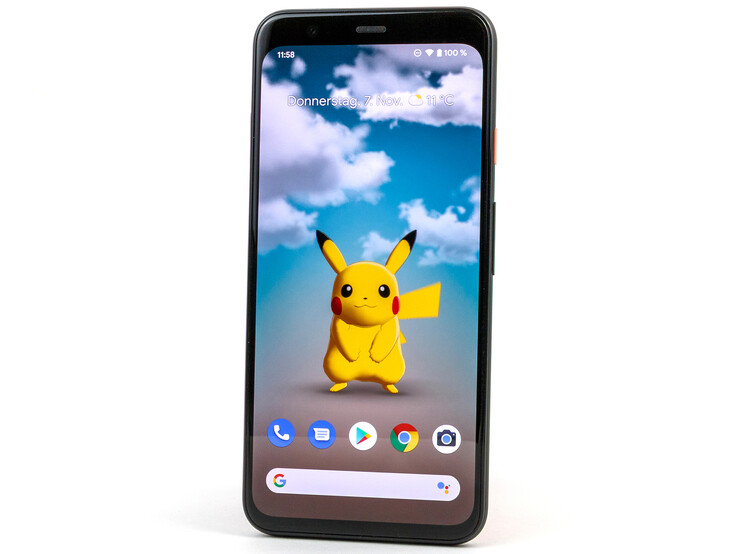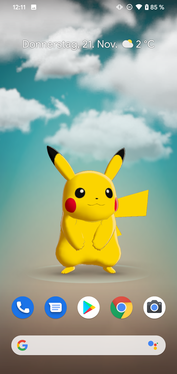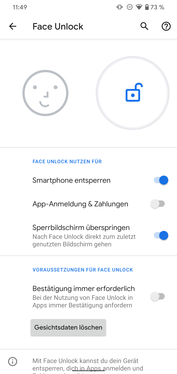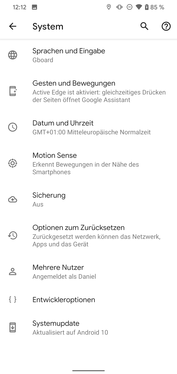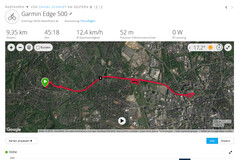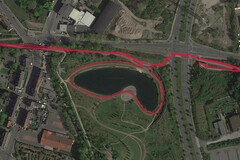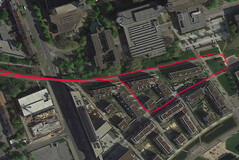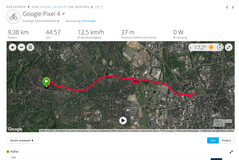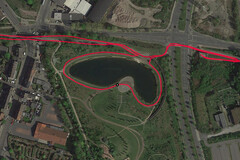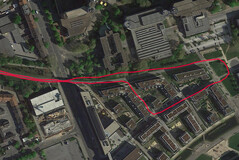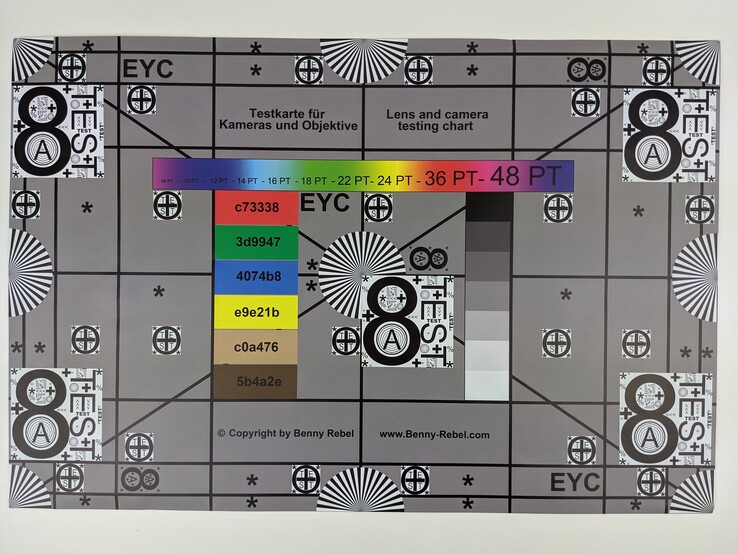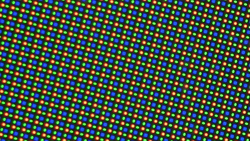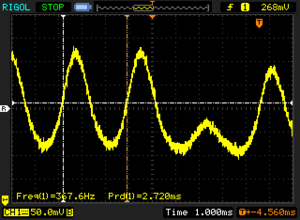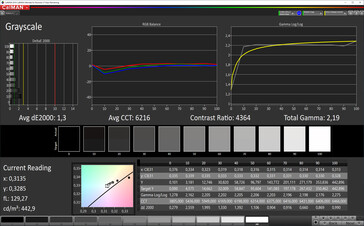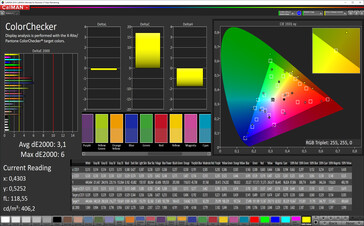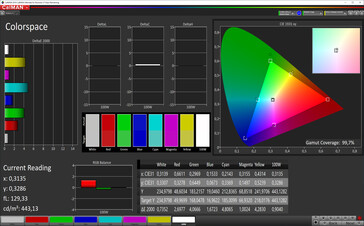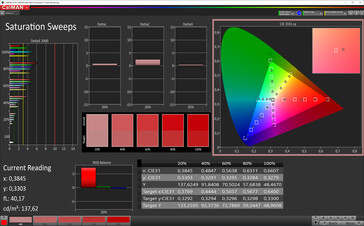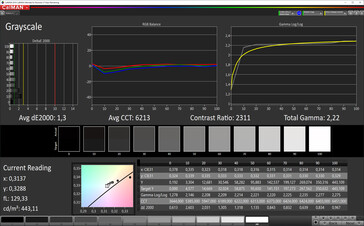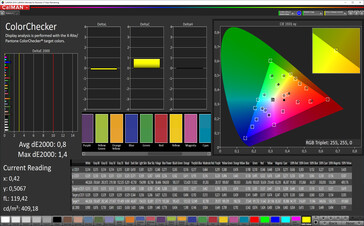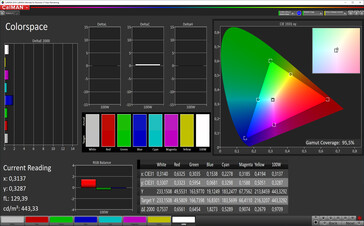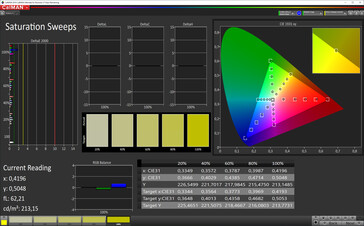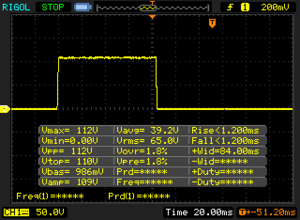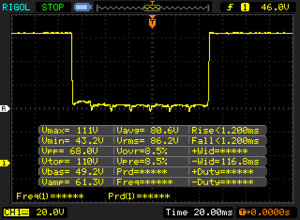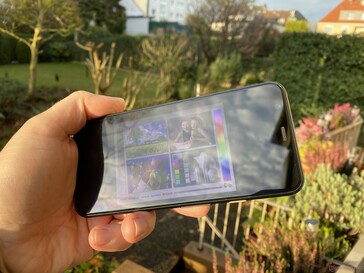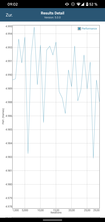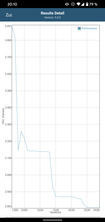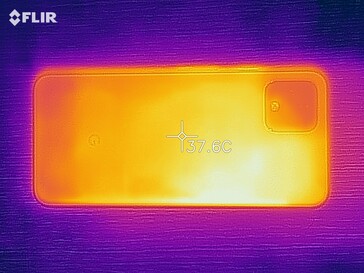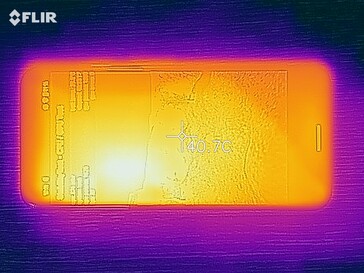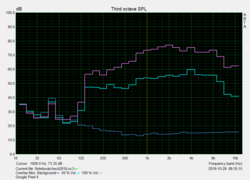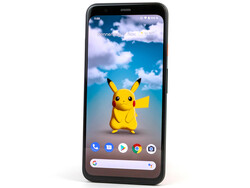Google Pixel 4 Review: no longer at the smartphone forefront
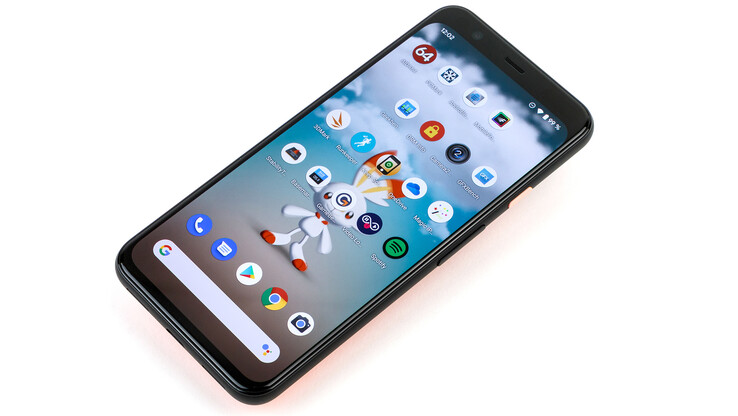
At first glance Google’s Pixel 4 does not seem to have changed much. Compared to its Pixel 3 predecessor the display grew to 5.7 inches and is now slightly larger yet still comparatively small. Narrow bezels remain nowhere to be seen, which is mostly due to the sensors mounted above the display.
The main difference is the Pixel 4’s array of NIR sensors used for facial recognition at the front. In addition, the panel has been upgraded to one with a 90 Hz refresh rate, and last but not least the camera’s telephoto lens has also been upgraded and now features a powerful digital zoom.
Since storage capacity remained unupgradable you will have to consider future storage requirements at the time of purchase. In the United States, the 64 GB SKU starts at $799 but is currently available for $599 as part of a Black Friday deal. The 128 GB model starts at $899 and just like the 64 GB SKU it is currently available for $200 less. Both deals expire December 2. At these prices, the Pixel 4 is no longer at the high-end of the market, and thus it competes more with the likes of a OnePlus 7T Pro, Galaxy S10e, or ZenFone 6.
Test group
Rating | Date | Model | Weight | Drive | Size | Resolution | Price |
|---|---|---|---|---|---|---|---|
| 85.7 % v7 (old) | 11 / 2019 | Google Pixel 4 SD 855, Adreno 640 | 162 g | 64 GB UFS 2.1 Flash | 5.70" | 2280x1080 | |
| 86.5 % v7 (old) | 09 / 2019 | Apple iPhone 11 A13 Bionic, A13 Bionic GPU | 194 g | 64 GB SSD | 6.10" | 1792x828 | |
| 85.1 % v7 (old) | 03 / 2019 | Samsung Galaxy S10e Exynos 9820, Mali-G76 MP12 | 150 g | 128 GB UFS 2.1 Flash | 5.80" | 2280x1080 | |
| 86.2 % v7 (old) | 03 / 2019 | Xiaomi Mi 9 SD 855, Adreno 640 | 173 g | 64 GB UFS 2.1 Flash | 6.39" | 2340x1080 | |
| 85.8 % v7 (old) | 10 / 2019 | OnePlus 7T SD 855+, Adreno 640 | 190 g | 128 GB UFS 3.0 Flash | 6.55" | 2400x1080 | |
| 88.5 % v7 (old) | 03 / 2019 | Huawei P30 Pro Kirin 980, Mali-G76 MP10 | 192 g | 256 GB UFS 2.1 Flash | 6.47" | 2340x1080 | |
| 83.9 % v7 (old) | 11 / 2018 | Google Pixel 3 SD 845, Adreno 630 | 148 g | 64 GB UFS 2.1 Flash | 5.50" | 2160x1080 |
Case
The Pixel 4 is available in three colors: Just Black, Clearly White, and Oh So Orange. Oddly enough the latter is not really orange but rather coral, similar to last year’s iPhone XR. The white and orange models are equipped with a matte rear glass surface, the black SKU with a glossy one. The camera cut-out measures almost exactly 1 x 1 inch (24.9 x 24.9 mm) and protrudes by around 1 mm (0.04 inches).
Build quality is superb, as expected. The device feels very solid and completely ignored all of our warping and twisting attempts. All gaps are consistent; however, the gap between the panel glass and the frame is larger than expected and tends to accumulate dirt and grime. The case itself is IP68-certified and thus protected against dust and water ingress.
The battery is not replaceable and sits perfectly flush inside the case. The SIM tray is made of metal covered by plastic and takes a single nano SIM card.
Connectivity
Due to its new facial recognition feature, Google decided to forego the previously included fingerprint reader. The USB 3.1 Type-C port supports both OTG and Power Delivery; however, it does not carry a DisplayPort signal.
The device supports NFC and Bluetooth 5.0 but lacks an FM radio, an IR blaster, and a headphone jack.
Software
The Google Pixel 4 runs Android 10 out of the box and is going to receive operating system and security updates for three years until October 2022. Unfortunately, Google dropped the previously available free Google Drive storage for photos that used to come with every Pixel purchase.
Like all other Pixel smartphones, the Pixel 4 is going to be the first to receive Google’s latest software features. For example, it already supports the brand-new recording feature that not only records your voice but also automatically creates a transcript. Given that the voice recognition feature works offline and takes place entirely on the phone itself this feature does not even require internet access, and it worked remarkably well in our test. At the time of writing it was limited to English only. Once transcribed you can proceed and search your text for keywords.
User account management is not available.
Communication and GPS
The Pixel 4 supports IEEE 802.11a/b/g/n/ac in both the 2.4 as well as the 5 GHz bands, but it does not support the brand-new Wi-Fi 6 standard. In our tests, the Pixel 4 featured good range and signal quality, and it was fairly fast when benchmarked while connected to our Linksys EA8500 reference router. That said, the transfer rates fluctuated slightly.
Its cellular modem supports LTE Cat. 18 and thus a very wide range of frequencies, which should work just as great abroad as it does at home. All required bands for Russia, China, Europe, and North America are supported.
GPS lock was obtained fairly quickly outdoors as well as indoors, and the location services supported by the Pixel 4 include GPS, Glonass, BeiDou, QZSS, and Galileo. Neither SBAS nor dual-band is supported.
We test every smartphone on a quick bike tour around the block and compare it to a professional Garmin Edge 500 satnav. Overall, the Pixel 4 did very well, and its recorded track was just off by 30 m (98 ft) when compared to the Garmin’s. This was mostly due to the Pixel 4 being off-track every now and then.
Telephony and Call Quality
The telephony app remained largely unchanged. It remains simple and well structured, and it supports SIP account configuration, a feature most interesting for business users.
Call quality was great albeit with a slight echo when talking on speakerphone. Recording phone calls is not supported, and the recorder app cannot be started during a phone call.
The Pixel 4 supports VoLTE and Wi-Fi calling. Dual SIM capabilities are supported via eSIM.
Cameras
The front-facing camera features an 8 MP sensor with a 90-degree angle of coverage, and it records videos in FHD. Spec-wise this camera is not going to win any awards; however, the software is what turns it into a great shooter. Selfies turn out very well with well-balanced colors and a harmonious dynamic range. Low-light photos turn out well thanks to the included optional night mode.
The main camera received an extra telephoto lens when compared to its predecessor, and it now supports a 2x optical zoom. Google also promises a highly optimized digital zoom that is supposed to work practically lossless. When compared with its competitors the Pixel 4’s zoom worked great but was unable to keep up with the Huawei P30 Pro, which has a zoom level that was not just higher but also of a much better quality.
Overall image quality was very good and low-light photos taken at night turned out very well thanks to the included night mode. Photos were high in contrast with rich colors and a comparatively wide dynamic range.
Videos also turned out very well. Unfortunately, the Pixel 4 can only record 4K UHD at 30 FPS. In addition, the camera tends to increase the level of noise significantly in low-light situations.
When tested in the lab the Pixel 4 performed as well as expected after our first real-world impressions. Our test chart showed neither excessively over-sharpened outlines nor color gradients, and fonts were captured very well. We did notice a slight decrease in contrast ratio towards the bottom edge.
Color representation was also decent. White balance was very pleasing albeit a bit warmer than expected, and colors were slightly too dark.
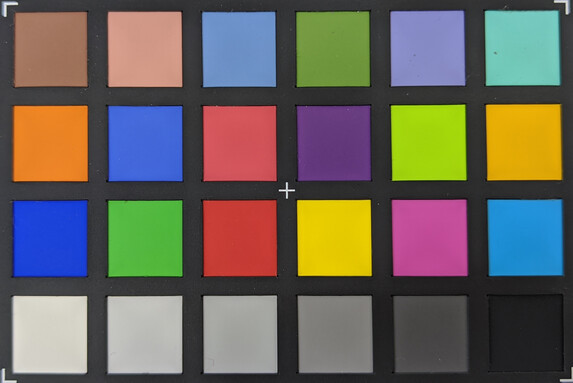

Accessories and Warranty
Included in the box you will find a modular 18 W power supply, a USB cable, an OTG dongle, as well as some technical documentation. A headset is not included.
As is often the case, devices sold in the US are limited to just one year of manufacturer warranty while devices sold in Europe come with two years of full warranty by default. An optional warranty extension for $149 extra is required to get the same level of warranty coverage as European customers.
Input Devices and Handling
Just like the Pixel 3, the Pixel 4 supports Active Edge technology. Specifically, this means that you can mute the phone or launch the Google Assistant by pressing on the edge of the screen. This feature has not been further refined by Google.
New features include the NIR lenses next to the front-facing camera which are used for facial recognition and work similarly to the iPhone's Face ID feature. In general, this feature is a great idea, and it worked very reliably and fast. Unfortunately, unlike Apple’s Face ID the Pixel phone does not differentiate between closed and open eyes, and it does not even require the user to look at the phone at all. However, Google has already announced further improvements and refinement.
A second feature brought to you by aforementioned array of NIR cameras is support for touchless gestures. So far, the set of gestures is very limited, and you can control some apps such as the alarm clock or various music apps, such as the included music app or others like Spotify. Compared with the LG G8s ThinQ, gesture recognition worked much better.
Display
The 5.7-inch OLED display runs at a native resolution of 2280x1080 (which makes for a high pixel density) and is one of the smaller panels available today. The display supports a refresh rate of up to 90 Hz. We cannot confirm claims that this support is not available at lower levels of brightness as we were able to detect the increased PWM frequency range typical for 90 Hz panels regardless of display brightness. That said, PWM frequencies fluctuated significantly between 176.1 and 367.6 Hz and are thus low enough to potentially cause eye strain and headaches in sensitive users.
Brightness distribution was very flat and homogenous. The maximum brightness determined during the APL50 test (455 nits) was practically identical to a full-screen measurement. Due to the underlying OLED technology the display’s black level is zero and the resulting contrast ratio thus infinite. Unfortunately, the display does not support short-term brightness boosts with enabled ambient light sensor.
In return, it supports an always-on feature, a night mode, and automatic ambient-light based color temperature adjustment.
| |||||||||||||||||||||||||
Brightness Distribution: 94 %
Center on Battery: 554 cd/m²
Contrast: ∞:1 (Black: 0 cd/m²)
ΔE ColorChecker Calman: 0.8 | ∀{0.5-29.43 Ø4.77}
ΔE Greyscale Calman: 1.3 | ∀{0.09-98 Ø5}
95.5% sRGB (Calman 2D)
Gamma: 2.22
CCT: 6213 K
| Google Pixel 4 OLED, 2280x1080, 5.7" | Apple iPhone 11 IPS, 1792x828, 6.1" | Samsung Galaxy S10e AMOLED, 2280x1080, 5.8" | Xiaomi Mi 9 AMOLED, 2340x1080, 6.4" | OnePlus 7T AMOLED, 2400x1080, 6.6" | Huawei P30 Pro OLED, 2340x1080, 6.5" | Google Pixel 3 OLED, 2160x1080, 5.5" | |
|---|---|---|---|---|---|---|---|
| Screen | -2% | -64% | -10% | -127% | -57% | -34% | |
| Brightness middle (cd/m²) | 554 | 679 23% | 426 -23% | 593 7% | 693 25% | 597 8% | 393 -29% |
| Brightness (cd/m²) | 550 | 671 22% | 427 -22% | 587 7% | 703 28% | 608 11% | 398 -28% |
| Brightness Distribution (%) | 94 | 93 -1% | 96 2% | 94 0% | 96 2% | 89 -5% | 91 -3% |
| Black Level * (cd/m²) | 0.68 | ||||||
| Colorchecker dE 2000 * | 0.8 | 0.8 -0% | 2.14 -168% | 0.9 -13% | 3.42 -328% | 2.2 -175% | 1.4 -75% |
| Colorchecker dE 2000 max. * | 1.4 | 2.4 -71% | 3.29 -135% | 2 -43% | 6.12 -337% | 3.6 -157% | 2.5 -79% |
| Greyscale dE 2000 * | 1.3 | 1.1 15% | 1.8 -38% | 1.5 -15% | 3.3 -154% | 1.6 -23% | 1.2 8% |
| Gamma | 2.22 99% | 2.24 98% | 2.111 104% | 2.27 97% | 2.265 97% | 2.23 99% | 2.19 100% |
| CCT | 6213 105% | 6610 98% | 6329 103% | 6548 99% | 6799 96% | 6268 104% | 6597 99% |
| Contrast (:1) | 999 |
* ... smaller is better
Screen Flickering / PWM (Pulse-Width Modulation)
| Screen flickering / PWM detected | 367.6 Hz | ||
The display backlight flickers at 367.6 Hz (worst case, e.g., utilizing PWM) . The frequency of 367.6 Hz is relatively high, so most users sensitive to PWM should not notice any flickering. However, there are reports that some users are still sensitive to PWM at 500 Hz and above, so be aware. In comparison: 53 % of all tested devices do not use PWM to dim the display. If PWM was detected, an average of 8084 (minimum: 5 - maximum: 343500) Hz was measured. | |||
We determine color accuracy by testing each display with a spectrophotometer and the CalMAN software suite. The Pixel 4 showed a very good white balance as well as very accurate grayscale. Color accuracy depends on selected color mode. In Natural the colors were extraordinarily accurate while saturation was slightly increased in Adaptive. Enhanced mode increased saturation even further.
The supported color space is larger than sRGB, however there is no official AdobeRGB or DCI-P3 support.
Display Response Times
| ↔ Response Time Black to White | ||
|---|---|---|
| 2.4 ms ... rise ↗ and fall ↘ combined | ↗ 1.2 ms rise | |
| ↘ 1.2 ms fall | ||
| The screen shows very fast response rates in our tests and should be very well suited for fast-paced gaming. In comparison, all tested devices range from 0.1 (minimum) to 240 (maximum) ms. » 11 % of all devices are better. This means that the measured response time is better than the average of all tested devices (20.2 ms). | ||
| ↔ Response Time 50% Grey to 80% Grey | ||
| 2.4 ms ... rise ↗ and fall ↘ combined | ↗ 1.2 ms rise | |
| ↘ 1.2 ms fall | ||
| The screen shows very fast response rates in our tests and should be very well suited for fast-paced gaming. In comparison, all tested devices range from 0.165 (minimum) to 636 (maximum) ms. » 10 % of all devices are better. This means that the measured response time is better than the average of all tested devices (31.6 ms). | ||
Performance
The Pixel 4 features a Snapdragon 855 instead of the newer Plus model of this chipset, a total of 6 GB of RAM, and an Adreno 640.
In our benchmarks, it performed very well overall but remained slightly slower than other smartphones based on the same SoC. Only in the system performance benchmark did it outperform the entire competition by a long shot. In day-to-day use the operating system felt very smooth.
| PCMark for Android | |
| Work performance score (sort by value) | |
| Google Pixel 4 | |
| Samsung Galaxy S10e | |
| Xiaomi Mi 9 | |
| OnePlus 7T | |
| Huawei P30 Pro | |
| Google Pixel 3 | |
| Average Qualcomm Snapdragon 855 (10330 - 14439, n=19) | |
| Work 2.0 performance score (sort by value) | |
| Google Pixel 4 | |
| Samsung Galaxy S10e | |
| Xiaomi Mi 9 | |
| OnePlus 7T | |
| Huawei P30 Pro | |
| Google Pixel 3 | |
| Average Qualcomm Snapdragon 855 (8342 - 11440, n=19) | |
| AnTuTu v8 - Total Score (sort by value) | |
| Google Pixel 4 | |
| Xiaomi Mi 9 | |
| Huawei P30 Pro | |
| Average Qualcomm Snapdragon 855 (376698 - 451559, n=8) | |
| AnTuTu v7 - Total Score (sort by value) | |
| Google Pixel 4 | |
| Apple iPhone 11 | |
| Samsung Galaxy S10e | |
| Xiaomi Mi 9 | |
| OnePlus 7T | |
| Huawei P30 Pro | |
| Google Pixel 3 | |
| Average Qualcomm Snapdragon 855 (217967 - 398720, n=16) | |
The browser benchmarks were performed with the preloaded version of Chrome, v78. The Pixel 4 performed very well and felt very snappy, however it was unable to keep up with the iPhone.
| Jetstream 2 - 2.0 Total Score | |
| Average of class Smartphone (23.8 - 387, n=147, last 2 years) | |
| Apple iPhone 11 (Safari Mobile 13.0) | |
| OnePlus 7T (Chrome 76) | |
| Huawei P30 Pro (Chrome 73) | |
| Average Qualcomm Snapdragon 855 (45.5 - 67, n=16) | |
| Xiaomi Mi 9 (Chrome 73) | |
| Google Pixel 4 (Chrome 78) | |
| JetStream 1.1 - Total Score | |
| Apple iPhone 11 (Safari Mobile 13.0) | |
| OnePlus 7T (Chrome 76) | |
| Xiaomi Mi 9 (Chrome 73.0.3683.75) | |
| Average Qualcomm Snapdragon 855 (84.4 - 120, n=17) | |
| Google Pixel 4 (Chrome 78) | |
| Google Pixel 3 (Chrome 70) | |
| Speedometer 2.0 - Result 2.0 | |
| Average of class Smartphone (15.2 - 643, n=119, last 2 years) | |
| Apple iPhone 11 (Safari Mobile 13.0) | |
| OnePlus 7T (Chome 76) | |
| Huawei P30 Pro (Chrome 73) | |
| Xiaomi Mi 9 (Chrome 73.0.3683.75) | |
| Average Qualcomm Snapdragon 855 (42.5 - 67.9, n=15) | |
| Google Pixel 4 (Chrome 78) | |
| WebXPRT 3 - Overall | |
| Apple iPhone 11 (Safari Mobile 13.0) | |
| Average of class Smartphone (38 - 380, n=30, last 2 years) | |
| Huawei P30 Pro (Chrome 73) | |
| Xiaomi Mi 9 (Chrome 73.0.3683.75) | |
| Average Qualcomm Snapdragon 855 (90 - 129, n=20) | |
| OnePlus 7T (Chrome 76) | |
| Google Pixel 3 (Chrome 70) | |
| Google Pixel 4 (Chrome 78) | |
| Octane V2 - Total Score | |
| Average of class Smartphone (2228 - 126661, n=194, last 2 years) | |
| Apple iPhone 11 (Safari Mobile 13.0) | |
| OnePlus 7T (Chrome 76) | |
| Xiaomi Mi 9 (Chrome 73.0.3683.75) | |
| Average Qualcomm Snapdragon 855 (17011 - 33918, n=21) | |
| Google Pixel 4 (Chrome 78) | |
| Huawei P30 Pro (Chrome 73) | |
| Samsung Galaxy S10e (Chrome 73) | |
| Google Pixel 3 (Chrome 70) | |
| Mozilla Kraken 1.1 - Total | |
| Google Pixel 3 (Chrome 70) | |
| Samsung Galaxy S10e (Chrome 73) | |
| Average Qualcomm Snapdragon 855 (1852 - 2611, n=19) | |
| Google Pixel 4 (Chrome 78) | |
| OnePlus 7T (Chrome 76) | |
| Huawei P30 Pro (Chrome 73) | |
| Xiaomi Mi 9 (Chrome 73.0.3683.75) | |
| Average of class Smartphone (257 - 28190, n=154, last 2 years) | |
| Apple iPhone 11 (Safari Mobile 13.0) | |
* ... smaller is better
The Pixel 4 comes with either 64 GB or 128 GB of UFS 2.1 storage. Considering that the hitherto free extra cloud storage that used to come with every Google smartphone purchase is no longer available, as well as the fact that the Pixel 4 lacks a microSD card slot, we consider the 64 GB SKU to be inadequate at its current price.
Performance was decent, and we did not encounter any issues during our tests.
| Google Pixel 4 | Samsung Galaxy S10e | Xiaomi Mi 9 | OnePlus 7T | Huawei P30 Pro | Google Pixel 3 | Average 64 GB UFS 2.1 Flash | Average of class Smartphone | |
|---|---|---|---|---|---|---|---|---|
| AndroBench 3-5 | -18% | 24% | 16% | 21% | 1% | -9% | 293% | |
| Sequential Read 256KB (MB/s) | 655 | 792 21% | 666 2% | 1406 115% | 849 30% | 766 17% | 696 ? 6% | 2235 ? 241% |
| Sequential Write 256KB (MB/s) | 247.7 | 194.1 -22% | 388.3 57% | 218.4 -12% | 250.8 1% | 181.8 -27% | 224 ? -10% | 1871 ? 655% |
| Random Read 4KB (MB/s) | 122.4 | 136.9 12% | 149.4 22% | 170.1 39% | 174.4 42% | 149.8 22% | 137.2 ? 12% | 297 ? 143% |
| Random Write 4KB (MB/s) | 146.6 | 24.1 -84% | 165.3 13% | 29.9 -80% | 159.2 9% | 133.8 -9% | 84.7 ? -42% | 343 ? 134% |
Gaming
Gaming Performance was determined using GameBench. We expected a decent performance based on the powerful SoC, and we were not disappointed. Unfortunately, the Pixel 4 did not really benefit from its 90 Hz panel as even games such as Arena of Valor peaked at just 63 FPS. Less-demanding games, such as PUBG Mobile, performed better. However, we noticed some glitches here and there.
Overall, performance was more than adequate for all current games. Sensors and touchscreen were quick to react and the speakers were decent. The display turned out to be too small for games that required a lot of screen real estate for a better overview.
PUBG Mobile (HD)
Arena of Valor (Ultra)
Emissions
Temperature
(+) The maximum temperature on the upper side is 35.5 °C / 96 F, compared to the average of 35.2 °C / 95 F, ranging from 21.9 to 247 °C for the class Smartphone.
(+) The bottom heats up to a maximum of 34.5 °C / 94 F, compared to the average of 34 °C / 93 F
(+) In idle usage, the average temperature for the upper side is 27 °C / 81 F, compared to the device average of 32.9 °C / 91 F.
Speakers
Both of the Pixel’s speakers were decent, unfortunately neither of them is forward-facing. On medium volume audio quality was great and well-balanced but rapidly distorted very noticeably on maximum volume.
Unfortunately, a 3.5-mm headset dongle is no longer included with the phone. Bluetooth codec support includes aptX, aptX HD, and LDAC.
Google Pixel 4 audio analysis
(+) | speakers can play relatively loud (85.6 dB)
Bass 100 - 315 Hz
(-) | nearly no bass - on average 19.8% lower than median
(±) | linearity of bass is average (12.8% delta to prev. frequency)
Mids 400 - 2000 Hz
(±) | higher mids - on average 5.4% higher than median
(+) | mids are linear (4.1% delta to prev. frequency)
Highs 2 - 16 kHz
(+) | balanced highs - only 4% away from median
(+) | highs are linear (4.2% delta to prev. frequency)
Overall 100 - 16.000 Hz
(±) | linearity of overall sound is average (16.8% difference to median)
Compared to same class
» 9% of all tested devices in this class were better, 7% similar, 85% worse
» The best had a delta of 11%, average was 35%, worst was 134%
Compared to all devices tested
» 29% of all tested devices were better, 7% similar, 64% worse
» The best had a delta of 4%, average was 24%, worst was 134%
Apple iPhone 11 audio analysis
(+) | speakers can play relatively loud (83.4 dB)
Bass 100 - 315 Hz
(±) | reduced bass - on average 13.5% lower than median
(±) | linearity of bass is average (13.6% delta to prev. frequency)
Mids 400 - 2000 Hz
(±) | higher mids - on average 5.3% higher than median
(+) | mids are linear (5.4% delta to prev. frequency)
Highs 2 - 16 kHz
(±) | higher highs - on average 10.3% higher than median
(+) | highs are linear (4.6% delta to prev. frequency)
Overall 100 - 16.000 Hz
(±) | linearity of overall sound is average (21.4% difference to median)
Compared to same class
» 41% of all tested devices in this class were better, 8% similar, 51% worse
» The best had a delta of 11%, average was 35%, worst was 134%
Compared to all devices tested
» 59% of all tested devices were better, 7% similar, 34% worse
» The best had a delta of 4%, average was 24%, worst was 134%
Battery Life
Power Consumption
Generally speaking, power consumption was pretty decent and low. However, power consumption during standby was fairly high and we would have expected much lower numbers at minimum brightness as well.
The Pixel 4 supports wired fast charging as well as wireless charging.
| Off / Standby | |
| Idle | |
| Load |
|
Key:
min: | |
| Google Pixel 4 2800 mAh | Apple iPhone 11 3110 mAh | Samsung Galaxy S10e 3100 mAh | Xiaomi Mi 9 3300 mAh | OnePlus 7T 3800 mAh | Huawei P30 Pro 4200 mAh | Google Pixel 3 2915 mAh | Average Qualcomm Snapdragon 855 | Average of class Smartphone | |
|---|---|---|---|---|---|---|---|---|---|
| Power Consumption | -14% | 10% | 19% | -9% | -10% | -10% | 1% | -10% | |
| Idle Minimum * (Watt) | 1.01 | 0.56 45% | 0.6 41% | 0.67 34% | 0.9 11% | 0.68 33% | 1.21 -20% | 0.939 ? 7% | 0.847 ? 16% |
| Idle Average * (Watt) | 1.63 | 2.99 -83% | 1.2 26% | 1.26 23% | 1.4 14% | 2.6 -60% | 2.01 -23% | 1.506 ? 8% | 1.448 ? 11% |
| Idle Maximum * (Watt) | 1.69 | 3.02 -79% | 1.5 11% | 1.29 24% | 2.9 -72% | 2.77 -64% | 2.05 -21% | 1.799 ? -6% | 1.633 ? 3% |
| Load Average * (Watt) | 4.67 | 4.17 11% | 5.2 -11% | 3.71 21% | 4.7 -1% | 3.74 20% | 4.06 13% | 4.61 ? 1% | 6.96 ? -49% |
| Load Maximum * (Watt) | 8.78 | 5.44 38% | 10.2 -16% | 9.3 -6% | 8.3 5% | 6.82 22% | 8.79 -0% | 9.04 ? -3% | 11.3 ? -29% |
* ... smaller is better
Battery Life
Compared to its predecessor, Google decided to decrease battery capacity. Considering the Pixel 3’s already poor battery life this decision is highly questionable, to say the least. As expected, the Pixel 4 scored dead last within our test group in our battery test.
It performed particularly poor in our real-world Wi-Fi test and did not shine in any of the other tests either. Power users should thus consider carrying around a power bank or giving it a quick top-up whenever possible.
| Google Pixel 4 2800 mAh | Apple iPhone 11 3110 mAh | Samsung Galaxy S10e 3100 mAh | Xiaomi Mi 9 3300 mAh | OnePlus 7T 3800 mAh | Huawei P30 Pro 4200 mAh | Google Pixel 3 2915 mAh | |
|---|---|---|---|---|---|---|---|
| Battery runtime | 98% | 6% | 37% | 75% | 89% | 11% | |
| Reader / Idle (h) | 16.8 | 46.1 174% | 19.8 18% | 27.5 64% | 33.4 99% | 32.8 95% | 22.9 36% |
| H.264 (h) | 10.3 | 19.1 85% | 13.3 29% | 16.8 63% | 16.1 56% | 19.9 93% | 12.1 17% |
| WiFi v1.3 (h) | 7.7 | 14.4 87% | 6.9 -10% | 9.1 18% | 14.9 94% | 14 82% | 7.9 3% |
| Load (h) | 3.1 | 4.5 45% | 2.7 -13% | 3.2 3% | 4.7 52% | 5.7 84% | 2.7 -13% |
Pros
Cons
Verdict
We find it hard to include the Google Pixel 4 among the ranks of other high-end smartphones. It is much more akin to more affordable flagships, such as the OnePlus 7T or the ZenFone 6. Google continues to focus on software instead of hardware innovations. Touchless gestures are more intuitive than on the LG G8s; however, they lack functionality and deepness and feel unfinished overall.
Once again, the camera is one of the Pixel’s main draws, and it now features an additional telephoto lens. Too bad it lacks an ultra-wide-angle lens. The display-to-body ratio is fairly poor but offset by the fairly decent 90 Hz panel. Unfortunately, the display is not as bright as some of its competitors and is thus not as capable of displaying HDR contents properly.
Google’s Pixel 4 offers a great camera and the latest software. Unfortunately, its small battery is a major drawback.
Storage capacity is another faux pas. 64 GB without the possibility of memory expansion is simply not enough in this price range, a handicap that cannot even be compensated by a full three years of update availability. On the plus side we find fast charging and an IP68-certified case that are then again quickly marginalized by the tiny battery with its poor battery life.
If you love pure vanilla Android and want to be at the forefront of the feature train then a Pixel smartphone is a must for you. However, you may want to consider a Pixel 3a instead. Yes, it is not as technologically advanced as the Pixel 4, but it offers a much better battery life in return.
Google Pixel 4
- 08/31/2022 v7 (old)
Daniel Schmidt




